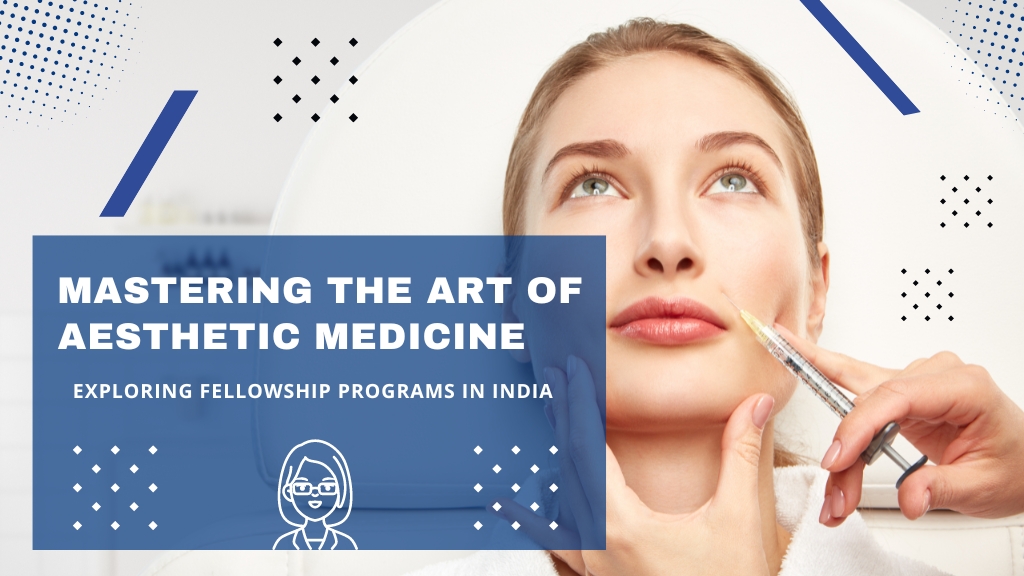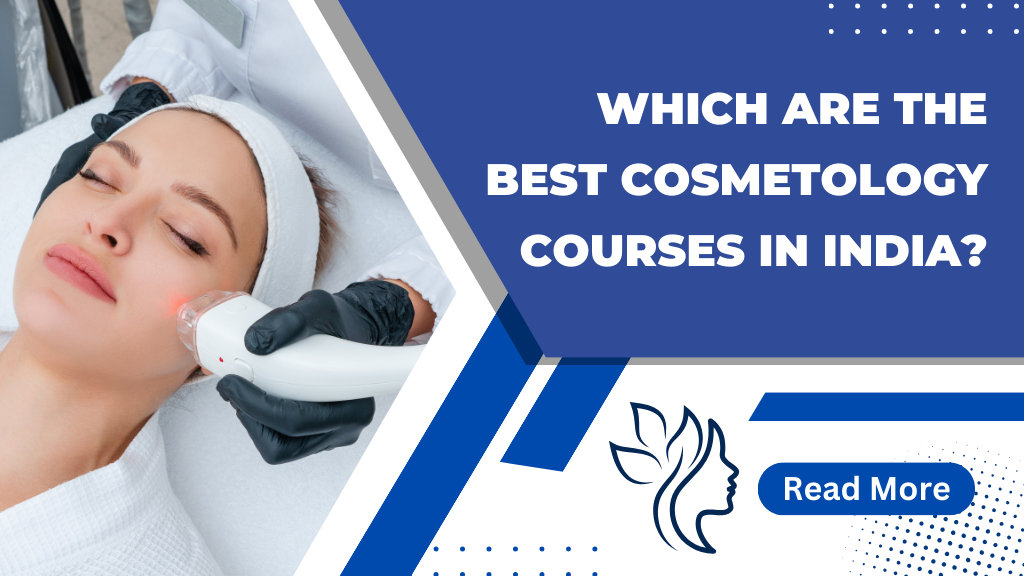Aesthetic medicine education is related to both art and science, which deals with the enhancement of the outlook of an individual through non-invasive and minimally invasive procedures. Since aesthetic grooming has become a priority for people in the presently changing societal norms, it has called for competent, skilled professionals. This article enumerates the role of Aesthetic Medicine Courses and feels that ILAMED is one of the leading institutes along with others that should be considered by health professionals.
Common aesthetic medicine procedures
Aesthetic medicine encompasses everything from injecting Botox and dermal fillers to laser treatments geared towards improvement in appearance rather than through invasive surgery. Common treatments include the following:
- Botox Injections: These are used to reduce the appearance of wrinkles by temporarily paralyzing facial muscles.
- Dermal Fillers: Materials induced into the skin to restore volume and fullness to the surface, particularly in areas like the cheeks and lips.
- Laser Treatments: Skin resurfacing, Hair Removal, and treatment of various skin disorders.
- Chemical Peels: Exfoliate skin to produce desired effects of texture and tone; eliminate acne scars and pigmentation.
- Microdermabrasion: Treatment that thins the stratum corneum with the consequence of a reduction of benign epidermal pigmented lesions.
- IPL Photorejuvenation: Has been shown to be effective in reducing benign epidermal pigmented and vascular lesions.
- Laser Hair Reduction: This effectively and often permanently reduces unwanted darkly pigmented hair.
- Phlebectomy: Varicose veins can be treated by this minimally invasive procedure.
- Sclerotherapy: Spider veins and small varicose veins are commonly treated by injection treatments.
- Thread Lifts: These are minimally invasive lifts and tighten sagging skin of the face. These cosmetic procedures, depending on the extent of the intervention, may be further termed as non-invasive, minimally invasive, or invasive. The minimally invasive ones have become the mainstays of the treatment for mild to moderate age-related facial changes.
The field of aesthetics continuously evolved to implement new technologies and techniques in the interest of safety and satisfaction of the patients. In turn, with increased demand for the services, there will be a need for qualified professionals to render effective and safe treatments.
Increased Demand for Aesthetic Treatments
Due to several factors, aesthetic procedures are on the rise in popularity :
- Social media influence is thought to be increasing regarding aesthetic procedures where much awareness and accessibility can be noted concerning beauty standards, particularly from social media platforms such as Instagram and TikTok. This, in turn, has encouraged people towards cosmetic enhancements.
- Cultural Shifts: Acceptance towards aesthetic treatments as a mode of betterment and hence attracting a greater clientele has increased.
- Advancing Technology: Betterment of procedures and products for aesthetic purposes has made these treatments non-invasive, safer, and more effective.
And due to such trends, physicians, too, have been catching onto them and are eager to expand their practices to incorporate aesthetic services in order to improve patient loyalty and satisfaction.
The Significance of Aesthetic Medicine Courses for Doctors
For health professionals to effectively meet the growth in demand for aesthetic treatments, specialized training will be required. Aesthetic Medicine Courses aimed at doctors will thereby provide the health practitioner with the right skills and knowledge to apply various procedures safely and effectively. Some of the key areas of study in these courses include:
- Anatomy and Physiology: Knowledge in the human body, but mostly in the facial structure to apply aesthetic procedures in a safe way. Knowledge in anatomy will help the practitioner avoid complications and ensure the best results.
- Injecting Techniques: Mastery of the injecting techniques is quite an essential factor yielding the best results with fillers and neuromodulators, but it reduces risks. Often, the courses include practical training to ensure practitioners are comfortable executing these techniques.
- Patient Assessment: Assessment of the patient’s needs and expectations is a delicate art in creating an individualized treatment plan that encompasses their objectives. Generally, good communication and assessment skills lead to overall patient satisfaction and improved results.
- Complications Management: Teaching how to manage possible complications secures the safety of the patient and builds confidence in the practitioner. Being informed about the risks for any particular procedure helps practitioners manage those complications better.
Comprehensive Aesthetic Medicine Courses
Aesthetic Medicine Courses really vary in duration, content, and delivery methods; it is also important that most of them represent theoretical knowledge, along with practical skills, including practice under instructors’ supervision. These courses truly can be adapted for beginners and professionals willing to further improve their knowledge.
These may vary from a short course on specific techniques to a full-fledged diploma course in the most expansive range of aesthetic procedures. Such flexibility allows healthcare professionals to choose courses that best fit their career goals and schedules.
Courses in Aesthetic Medicine at ILAMED Institute
The Institute of Laser & Aesthetic Medicine belongs to the world leaders in aesthetic medicine education. ILAMED was founded in 2003 and has trained more than 300,000 health professionals all over the world since that time. The Institute has many courses answering various needs by practitioners, including:
- Aesthetic Medicine Diploma Course: The intensive course is meant to ensure that you get broad-based knowledge in the fields of facial aesthetics, skin rejuvenation, and advanced injectable techniques. You would be confident enough to perform all aesthetic procedures confidently, having sound theoretical and practical knowledge.
- Certificate Courses: ILAMED provides short-term certificate courses in specific areas such as Botox, dermal fillers, and laser treatments. Such courses would be ideal for professionals who wish to specialize in a particular technique, as they can immediately develop their skill set in the respective method.
- Workshops and Masterclasses: Regular workshops and masterclasses are held by ILAMED for those who would like to fine tune their skills. These are conducted by experts in the sector and include hands-on experience, helping them learn about the latest advancements in aesthetic medicine.
ILAMED focuses on practical training so that the graduates can be exposed practically before entering the profession. The commitment of this institute towards quality education has accorded it the leadership position within the aesthetic medicine field.
Conclusion
The need for special training is much more evident as Aesthetic Medicine continues to grow. Courses of aesthetic medicine form a vital part in the life of any doctor or healthcare professional wanting to excel in this enriching line of work. It is only in reputed institutions, such as ILAMED, that any practitioner may get the required knowledge and expertise to safely and effectively offer new, innovative treatments to the patient.
Aesthetic medicine will indeed have a great future, but only proper education will assign professionals the role they deserve in changing lives with the enhancement of beauty. Education will be a continuous process since the industry is in a continuous development and evolution phase, with new trends and needs popping up day in and day out. Embracing this educational journey not only enhances professional capability but also contributes to overall growth and credibility in the field of aesthetic medicine.
Moreover, with Aesthetic Medicine becoming increasingly integrated into general practices, professionals properly trained in the field will have a distinct competitive edge and be in a position to offer services over a broader spectrum, thus offering greater patient satisfaction. As continuous evolution of techniques and technologies keeps taking place, lifelong learning in aesthetic medicine will be the key to success in this dynamic and rewarding field.





